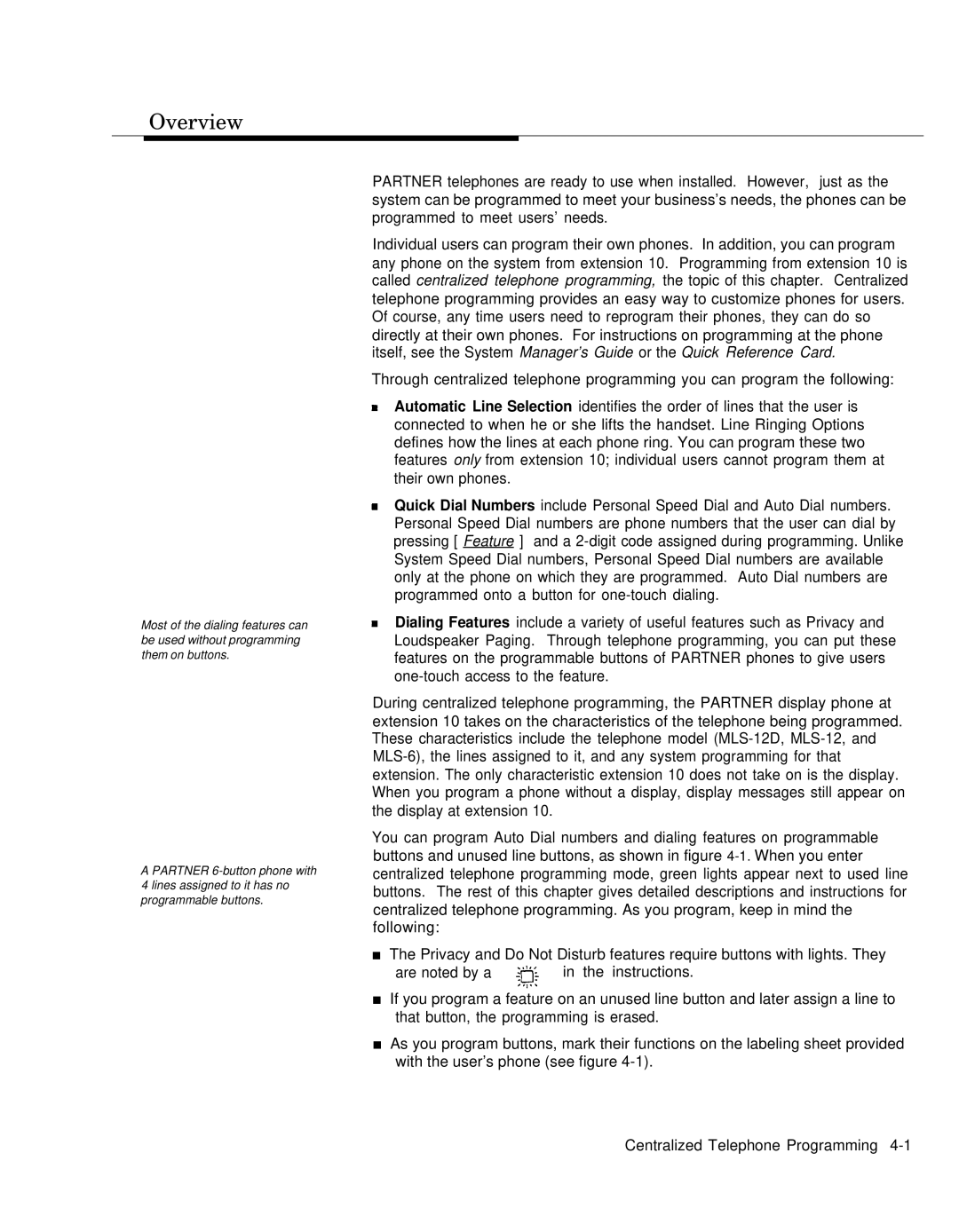
Overview
Most of the dialing features can be used without programming them on buttons.
APARTNER
4 lines assigned to it has no programmable buttons.
PARTNER telephones are ready to use when installed. However, just as the system can be programmed to meet your business’s needs, the phones can be programmed to meet users’ needs.
Individual users can program their own phones. In addition, you can program any phone on the system from extension 10. Programming from extension 10 is called centralized telephone programming, the topic of this chapter. Centralized telephone programming provides an easy way to customize phones for users. Of course, any time users need to reprogram their phones, they can do so directly at their own phones. For instructions on programming at the phone itself, see the System Manager’s Guide or the Quick Reference Card.
Through centralized telephone programming you can program the following:
Automatic Line Selection identifies the order of lines that the user is connected to when he or she lifts the handset. Line Ringing Options defines how the lines at each phone ring. You can program these two features only from extension 10; individual users cannot program them at their own phones.
Quick Dial Numbers include Personal Speed Dial and Auto Dial numbers. Personal Speed Dial numbers are phone numbers that the user can dial by pressing [ Feature ] and a
Dialing Features include a variety of useful features such as Privacy and Loudspeaker Paging. Through telephone programming, you can put these features on the programmable buttons of PARTNER phones to give users
During centralized telephone programming, the PARTNER display phone at extension 10 takes on the characteristics of the telephone being programmed. These characteristics include the telephone model
You can program Auto Dial numbers and dialing features on programmable buttons and unused line buttons, as shown in figure
■The Privacy and Do Not Disturb features require buttons with lights. They
are noted by a | in the instructions. |
■If you program a feature on an unused line button and later assign a line to that button, the programming is erased.
■As you program buttons, mark their functions on the labeling sheet provided with the user’s phone (see figure
Centralized Telephone Programming
